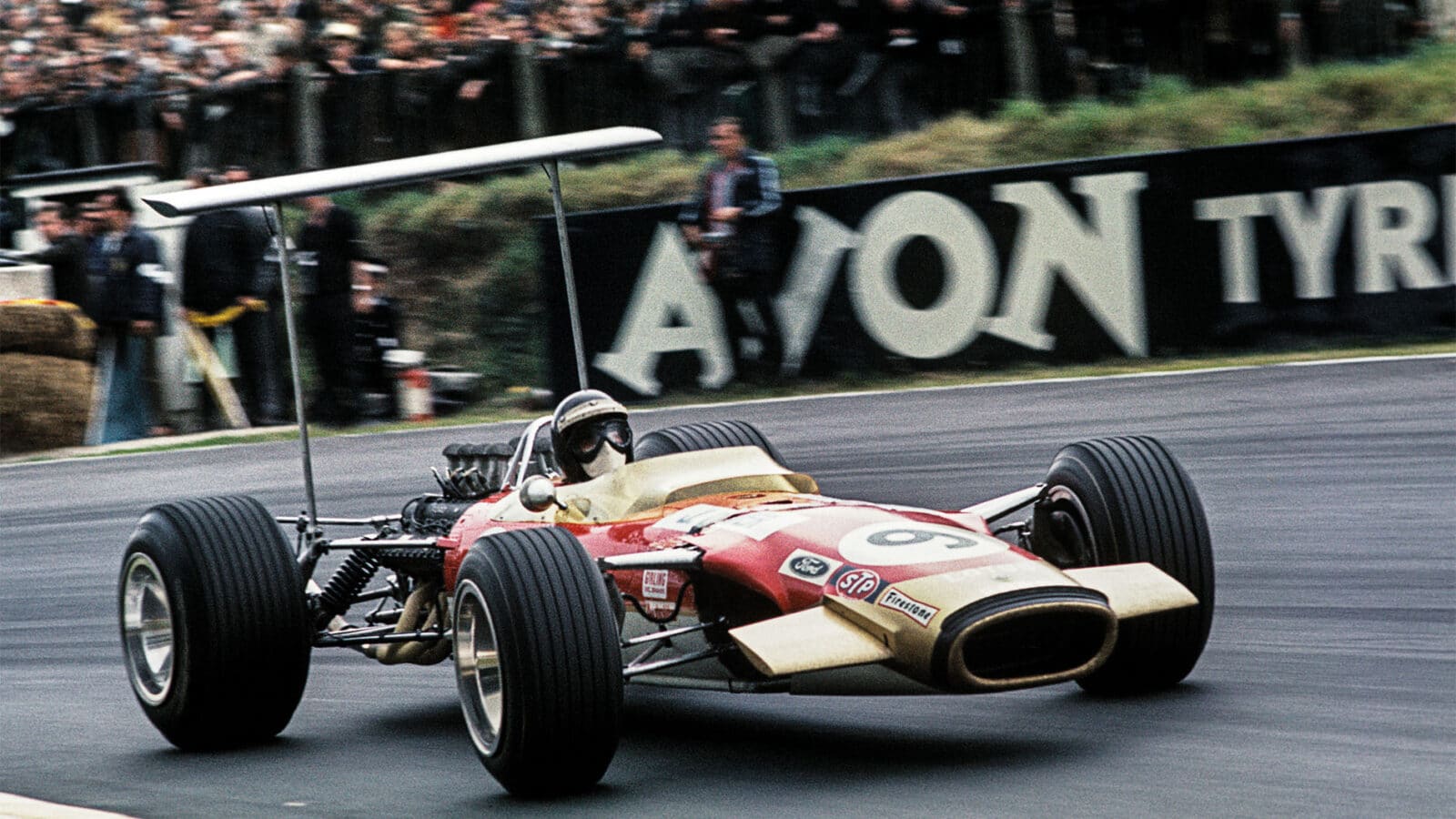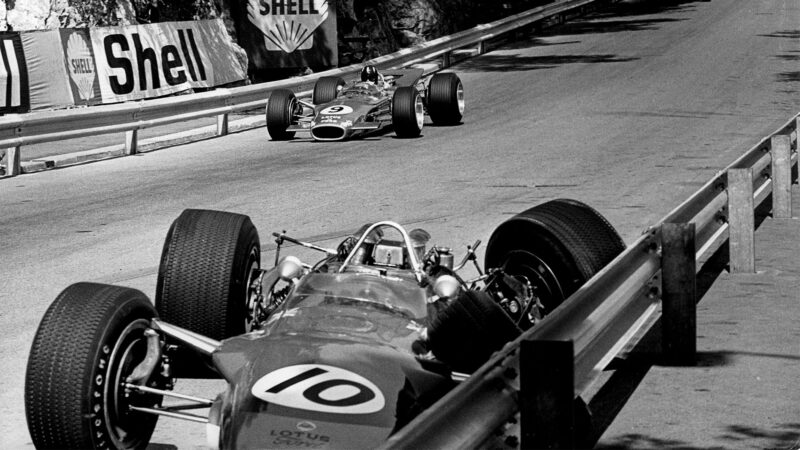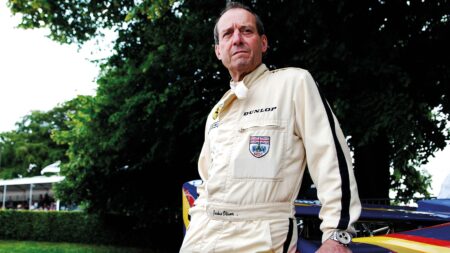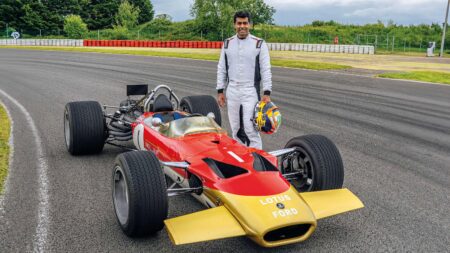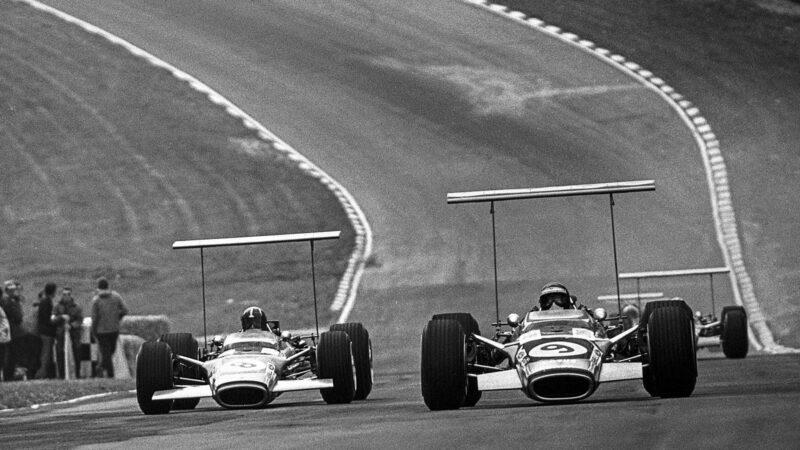“As I came out of the tunnel on the first lap, McLaren and Scarfiotti tangled. The only room that was available to me was between Scarfiotti’s car and the cliff face, or plunge into the harbour. The water didn’t look very enticing, so with the words of Colin still ringing in my ears, I tried to squeeze between Scarfiotti and the wall.
“I took all the wheels off the Lotus and sledged it down the hill to the chicane. When I stroked back to the pits, Colin said, ‘You’re fired!’
“Jim Endruweit convinced him that was a bit rough and got me back in the car for Spa. Being there for the first time in a wet practice was daunting, but nearly everybody retired and I was running last, i.e. fifth, when my car stopped.”
Those two fortunate points took the pressure off – a bit. At a very soggy Zandvoort, Jackie plodded round with drowned electrics, and then next time out, at Rouen, he suffered a huge crash in practice, writing off 49B.

What was left of Oliver’s Lotus 49 after Rouen crash
Grand Prix Photo
“With a wing of that size on an F1 car for the first time, the grip was phenomenal. But it just wasn’t strong enough. On the third or fourth lap, as Dickie Attwood moved over from one side of the track to the other to give me room, his turbulent air caused my wing to become detached, or bend backwards. Whatever happened, it turned from downforce to lift and took the back wheels off the ground. It was like trying to ride a one-wheeled circus bicycle.” With no spare car, Oliver was unable to start.
For the next race at Brands, the team retrieved an old-spec 49 from Rob Walker, who had taken delivery of a new 49B for Jo Siffert. Despite not having the freshest equipment, Jackie was on the case and qualified behind Hill in a superb second.
